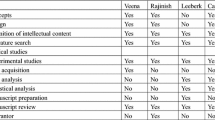Summary
The management of pregnancy after 40 completed weeks remains controversial because induction of labour has been, in the past, associated with an increase in the incidence of caesarean section. This study examined the use of vaginal prostaglandin tablets for the induction of labour in selected primiparae after forty one weeks of pregnancy. The outcome of prostaglandin induction in 118 consecutive patients was compared with the outcome in 90 consecutive patients who went into labour spontaneously at the same gestation before induction could be undertaken. The active management of labour was applied in both groups and, therefore, the management of labour was strictly standardised. There was no difference between the two groups in the mode of delivery. Nor was prostaglandin induction associated with an increased incidence of prolonged labour. In selected primiparae, the cautious use of vaginal prostaglandin tablets can induce labour successfully postdates without increasing the complications of labour. A larger study is required to examine the effects of the induction of labour at this gestation on the fetal outcome.
Similar content being viewed by others
References
Gibb, D. Prolonged pregnancy. In: Studd, J. editor. The Management of Labour. Black-well Scientific Publications. London. 1985: 108–122.
Bergsjo, P. Post-term pregnancy. In: Studd, J. editor. Progress in Obstetrics and Gynaecology, Churchill Livingstone. London. 1985: 5, 121–133.
McClure-Brown, J. C. Postmaturity. Am. J.Obstet. Gynecol. 1963: 85, 573–582.
Lagrew, D. C., Freeman, R. K. Management of postdate pregnancy. Am. J. Obstet. Gynecol. 1986: 154, 8–13.
Noble, A. D. Prevention of postmaturity by routine induction of labour at forty-one weeks maturity. J. Obstet. Gynaecol. 1981: 2, 88–89.
Cole, R. A., Howie, P. S., MacNaughton, M. C. Elective induction of labour. A randomised prospective trial. Lancet 1975: i, 767–770.
Gibb, D. M. F., Cardozo, L. D., Studd, J. W. S., Cooper, D. J., Prolonged pregnancy: is induction of labour indicated? A prospective study. Br. J. Obstet. Gynaecol. 1982: 89, 292–295.
Cardozo, L., Fysh, J., Pearce, J. M. Prolonged pregnancy: the management debate. Br. Med. J. 1986: 293, 1059–1063.
Keegan, K. A., Paul, R. H. Antepartum fetal heart trace testing. IV. The nonstress test as a primary approach. Am. J.Obstet. Gynecol. 1980: 136, 75–80.
Granados, J. L. Survey of the management of post-term pregnancy. Obstet. Gynecol. 1984: 63, 651–653.
Raybum, W. F., Motley, M. E., Stempel, L. E. et al. Antepartum prediction of the postmature infant. Obstet. Gynecol. 1982: 60, 148–153.
Crowley, P., O’Herlihy, C., Boylan, P. The value of ultrasound measurement of amniotic fluid volume in the management of prolonged pregnancies. Br. J.Obstet. Gynaecol. 1984: 91, 444–448.
Shepherd, J., Pearce, J. M. F. Sims, C. D. Induction of labour using prostaglandin E2 pessaries. Br. Med. J. 1979: 2, 108–110.
O’Driscoll, K., Meagher, D. The Active Management of Labour. First Edition. London. W.B. Saunders, 1980.
Turner, M. J., Webb, J. B., Gordon, H. Active management of labour in primigravidae. J. Obstet. Gynaecol. 1986: 7, 79–83.
Turner, M. J., Brassil, M. J., Gordon, H. Active management of labor associated with a decrease in the caesarean section rate in nulliparas. Obstet. Gynecol. 1988: 71, 150–154.
Steer, P. J. Postmaturity — much ado about nothing? Br. J. Obstet. Gynaecol. 1986: 93, 105–108.
Bergsjo, P., Bakketeig, L. S., Eikholm, S. N. Case-control analysis of post-term induction of labor. Acta. Obstet. Gynecol. Scand. 1982: 61, 317–324.
Butler, N. R., Bonham, D. F. (editors). Perinatal mortality — the first report of the 1958 British Perinantal Mortality Survey. E. & S. Livingstone. Edinburgh, 1963.
Turner, M. J., O’Herlihy, C. Adrenal hypofunction and Trisomy 18. Obstet. Gynecol. 1984: 63, 84–85(s).
Vorherr, H. Placental insufficiency in relation to postterm pregnancy and fetal postmaturity. Am. J. Obstet. Gynecol. 1975: 123, 67–103.
Hauth, J. C., Goodman, M. T., Gilstrap, L. C. Post-term pregnancy. I. Obstet. Gynecol. 1980: 56, 467–470.
Yudkin, P. L., Redman, C. W. G. Caesarean section dissected 1978–1983. Br. J. Obstet. Gynaecol. 1986: 93, 135–144.
Chamberlain, G., Philipp, E., Howlett, K., Masters, K. (editors). British Births 1970. Vol. 2. Obstetric Care. London. William Heinemann. 1978.
Shime, J., Gare, D. J., Andrews, J. et al. Prolonged pregnancy: Surveillance of the fetus and the neonate and the course of labor and delivery. Am. J. Obstet. Gynecol. 1984: 148, 547–551.
Harris, B. A., Huddleston, J. F., Sutliff, G. et al. The unfavourable cervix in prolonged pregnancy. Obstet. Gynecol. 1983: 62, 171–174.
Buchanan, D., Macer, J., Yonekura, M. L. Cervical ripening with prostaglandin E2 vaginal suppositories. Obstet. Gynecol. 1984: 63, 659–663.
Freeman, R. K., Garite, T. J., Modanlou, H. et al. Postdate pregnancy: utilisation of contraction stress testing for primary fetal surveillance. Am. J. Obstet. Gynecol. 1981: 140, 128–135.
Turner, M. J., Brassil, M., Connolly, R. et al. Does the incidence of dystocia increase after term? Abstract. Irish Perinatal Society. Ir. J. Med. Sci. 1988: 157, 330.
Boyd, M. E., Usher, R. H., McLean, F. H., Kramer, M. S. Obstetric consequences of postmaturity. Am. J. Obstet. Gynecol. 1988: 158, 334–338.
Ekman., G., Malstrom, A., Uldberg, N., Ulmsten, U. Cervical collagen: an important regulator of cervical function in term labour. Obstet. Gynecol. 1988: 67, 633–636.
Author information
Authors and Affiliations
Rights and permissions
About this article
Cite this article
Turner, M.J., Fox, R., Brassil, M. et al. Induction of labour postdates in primiparae using vaginal prostaglandin tablets. I.J.M.S. 159, 6–9 (1990). https://doi.org/10.1007/BF02937206
Issue Date:
DOI: https://doi.org/10.1007/BF02937206




